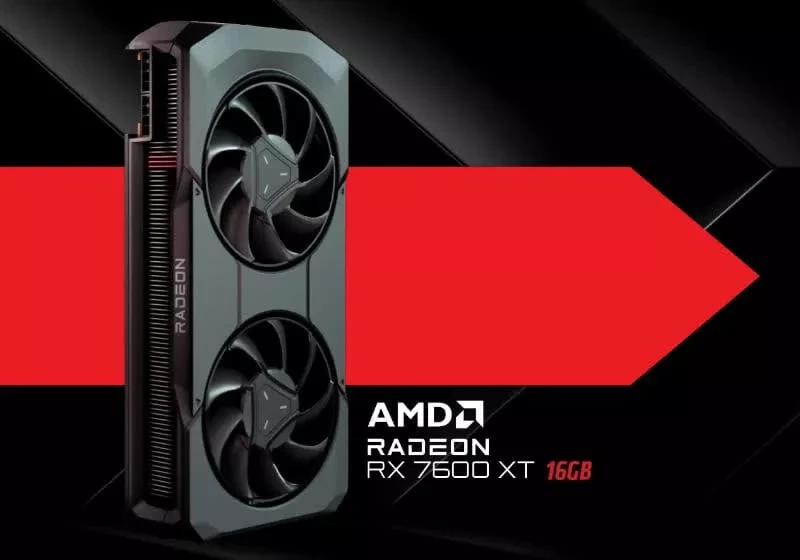The Release of amd‘s Latest Graphics Card: The Radeon RX 7600 XT
amd has unveiled its new graphics card, the Radeon RX 7600 XT, offering significant enhancements over its predecessor. Priced at $330, this GPU boasts a doubled VRAM capacity of 16GB and a slight overclock, positioning it as a compelling option in the mid-range market.
Performance Improvements and Specifications
amd claims substantial performance improvements when transitioning from the RX 7600 to the 7600 XT. The provided chart showcases increases ranging from 7 to 40 percent at 1080p and 13 to 45 percent at 1440p, indicating a remarkable leap in performance.
The RX 7600 XT utilizes a fully unlocked Navi 33 die with 32 compute units and 2,048 stream processors, along with a 10% higher game clock compared to the non-XT model. The inclusion of 16GB of GDDR6 at 18 Gbps on the same 128-bit bus effectively doubles the VRAM capacity while maintaining the same memory bandwidth.
Power and Efficiency
With these upgrades, the card’s board power rating has increased from 165W to 190W, marking a 15% increase. This rise in power consumption is understandable given the enhanced Features of the 7600 XT, signaling the need for heightened power demands to accommodate the card’s upgraded capabilities.
Performance Comparison with Competitive Offerings
In direct comparisons with competitive offerings, such as the RTX 4060, amd presents data indicating close competition and significant improvements in specific scenarios. The RX 7600 XT is positioned as a compelling alternative to its Nvidia counterpart, offering competitive performance at its price point.
Image Quality and Rendering Enhancements
amd claims to have improved encoding image quality through rate control optimizations in the latest version of their Software Development Kit (SDK). By implementing these improvements, amd addresses long-standing criticisms regarding streaming image quality on Radeon GPUs, particularly with H.264.
These enhancements, applicable to H.264, HEVC, and AV1 encoding, indicate amd’s commitment to refining the user experience by focusing on image quality and rendering optimizations, thus demonstrating a holistic approach to product development beyond raw performance metrics.
Pricing and Market Positioning
Despite its significant upgrades, the pricing of the Radeon RX 7600 XT raises some questions. Priced at $330, the MSRP is $60 higher than the RX 7600, predominantly for a minor clock increase and doubling of the VRAM. Real-world pricing could further escalate the cost, potentially rendering it less competitive in the market.
Comparatively, the 7600 XT is on par with the still-available RX 6700 XT, which boasts 12GB of VRAM and can be found for $320. The overlapping price points and Features introduce a level of complexity to the purchasing decision for consumers, prompting thoughtful consideration before investing in a new GPU.
Assessment and Future Prospects
While the Radeon RX 7600 XT presents commendable advancements and aims to compete with nvidia‘s offerings, it falls short in certain regards. The pricing, in particular, has given rise to skepticism within the tech community, questioning the value proposition of the 7600 XT against its counterparts.
However, amd‘s commitment to improving image quality and rendering efficiency, coupled with its strides in performance enhancements, signals a promising trajectory for future product offerings. If amd can address the pricing concerns and refine the value proposition of its GPUs, it has the potential to significantly impact the mid-range graphics card segment.
Conclusion
The Radeon RX 7600 XT serves as a testament to amd‘s dedication to pushing the boundaries of graphics card performance. While it faces pricing challenges and scrutiny over its competitive positioning, the technological advancements and performance gains demonstrate a compelling step forward for the company.
With continued focus on refining image quality, rendering enhancements, and striking a more competitive balance in pricing, amd has the opportunity to solidify its presence in the mid-range GPU market, offering consumers a truly compelling alternative to Nvidia’s offerings.
Source: techspot








No Comments